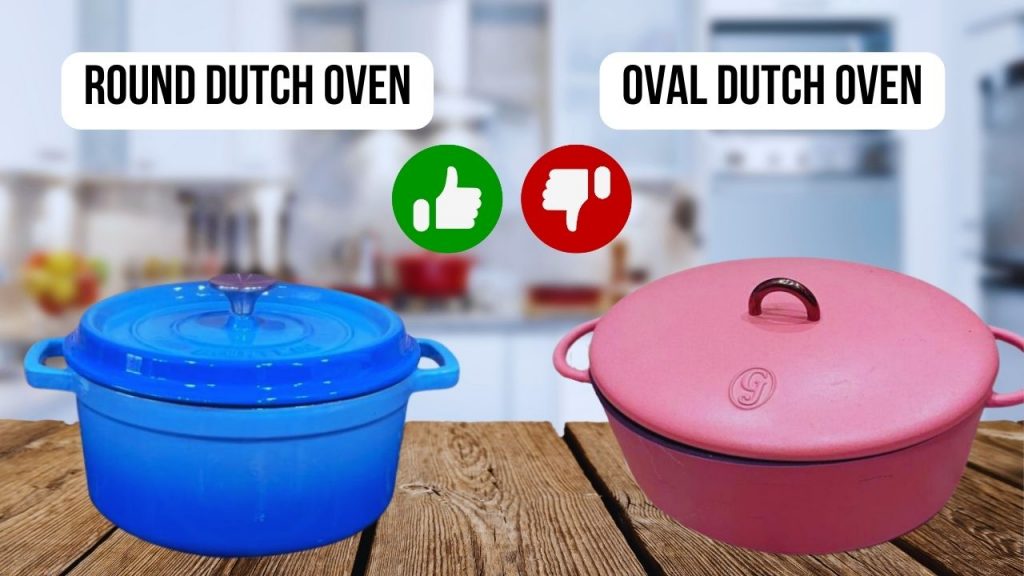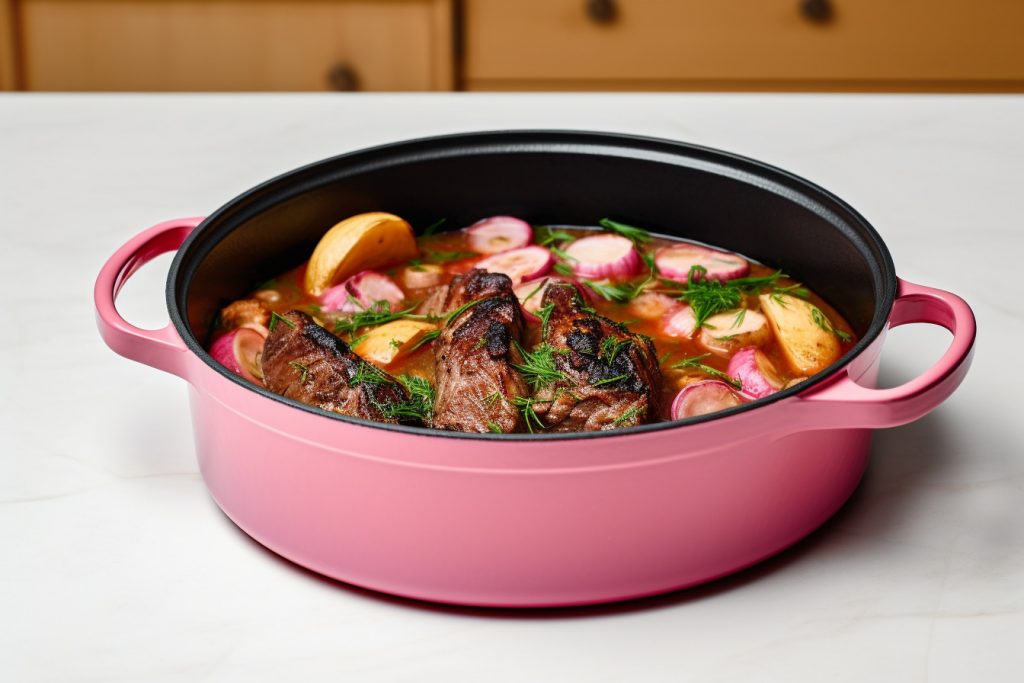Are you wondering which shape of Dutch oven to buy? As a restaurant chef who has worked with a wide variety of cookware, there are a few key considerations to keep in mind in choosing which shape of Dutch oven to buy.
In this blog post, I’ll share my insights on the differences between these two shapes and how they can impact your cooking experience.
What’s The Difference Between an Oval and a Round Dutch Oven?

While Dutch ovens are frequently constructed using the same materials for the same purpose, different shapes cater to our various cooking needs. Here are the key differences between a round and an oval-shaped Dutch oven.
Capacity and Size
The first significant difference between oval and round Dutch ovens is their capacity and size. Oval Dutch ovens are elongated and typically have a larger surface area than their round counterparts. Hence, they can accommodate longer cuts of meat and larger roasts more comfortably. If you often cook dishes like whole chickens, briskets, or pork loins, the oval Dutch oven provides the space you need to fit these ingredients without overcrowding.
On the other hand, round Dutch ovens are more space-efficient, making them a better choice for those with limited storage space or smaller kitchens. Their compact size is excellent for soups, stews, and one-pot meals that don’t require the additional room provided by an oval shape.
Cooking Performance

Your Dutch oven’s shape can also impact how well it cooks. Oval Dutch ovens are excellent for even heat distribution when cooking longer cuts of meat. The elongated shape allows you to arrange your ingredients in a single layer, which promotes consistent browning and cooking. The extended surface area ensures that each portion of the food receives the same heat level, resulting in a well-cooked, tender dish.
Conversely, round Dutch ovens excel at cooking dishes with liquids, such as soups and stews. The circular shape promotes efficient circulation of fluids, preventing uneven cooking. The curved sides are particularly helpful in preventing food from sticking to the corners and ensuring that your ingredients cook uniformly.
Storage
Storage is an important factor you must consider when choosing between oval and round Dutch ovens. Oval Dutch ovens take up more space due to their elongated shape, which might not be ideal for those with limited kitchen storage. However, they can often fit better on the stovetop when you have limited burner space because of their longer but narrower base.
Round Dutch ovens are usually more space-efficient and easier to stack when storing multiple pots and pans. They’re also easier to fit into standard ovens and may be a more practical choice for smaller kitchens or home cooks with limited storage options.
Conclusion
Choosing between oval and round-shaped Dutch ovens comes down to your cooking preferences, kitchen space, and the types of dishes you love to prepare. As a restaurant chef, I have found both oval and round Dutch ovens to be valuable tools in my kitchen, each with unique advantages.
Consider the types of dishes you cook most frequently and the storage space available in your kitchen. If you like cooking roasts and larger cuts of meat, an oval Dutch oven may be your ideal choice. However, if you frequently use your Dutch oven for soups, stews, and one-pot wonders, a round Dutch oven may be the way to go.
Whichever shape you choose, a quality Dutch oven is an investment that will serve you well for years, making your culinary creations even more delicious and satisfying.
Ensure you don’t pass up the chance to check out the list of top-5 Dutch ovens.

